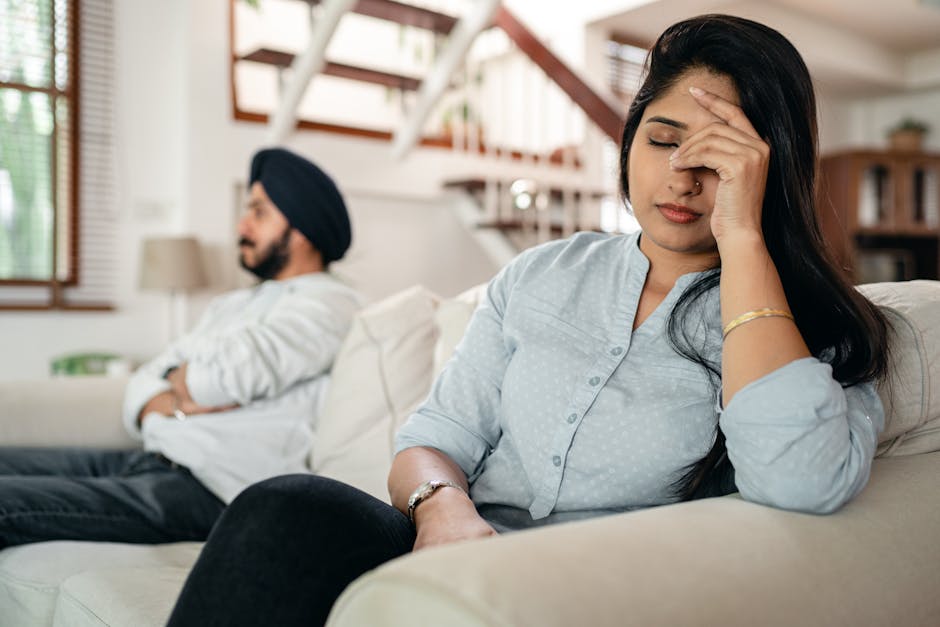What is Couples Therapy?
Couples therapy is a specialized form of counseling designed to help partners in a romantic relationship improve communication, resolve conflicts, and deepen their emotional connection. Guided by licensed professionals, such as marriage and family therapists or counseling psychologists, this process provides a safe environment to address challenges like infidelity, communication breakdowns, or major life transitions. With the growing popularity of online couples therapy, partners can now access expert guidance from the comfort of their own homes, making therapy more convenient and accessible. Using evidence-based approaches like emotionally focused therapy (EFT) or integrative behavioral couples therapy, couples therapy helps identify negative patterns, foster secure attachments, and build intimacy, empowering couples to create healthier and more fulfilling relationships.
Basic Principles of Couples Therapy
Couples therapy is all about helping partners reconnect, understand each other better, and tackle challenges as a team. It’s grounded in some key ideas that make the process effective, without getting too complicated. Let’s break it down in a way that’s easy to follow and relatable.
1. Embracing Differences
Every person brings their own personality, values, and life experiences into a relationship. These differences can make things exciting but also tricky. Therapy helps couples understand these unique traits and how they influence their relationship, so they can work together more harmoniously.
2. Handling Conflict Before It Escalates
Arguments are part of any relationship, but how couples handle them matters. Learning healthy conflict resolution skills can prevent destructive patterns and even reduce the risk of separation. Therapy focuses on improving communication and teaching ways to solve problems effectively.
3. Breaking Negative Cycles
It’s easy for relationships to fall into a rut of negative behaviors, like constant criticism or withdrawal. These patterns often stem from poor communication or stress. Therapy helps couples identify and interrupt these cycles before they cause more harm.
4. Understanding Each Other’s “Love Map”
Think of a “love map” as the mental and emotional blueprint you have of your partner. It includes how you see the relationship and how you respond emotionally. Therapy helps couples explore these maps, so they can better understand each other and build emotional closeness.
5. Sharing Responsibility
A healthy relationship thrives when both partners take equal responsibility for its well-being. In therapy, couples learn to recognize how they each contribute to the issues they face and work on making positive changes together.
6. Balancing Closeness and Independence
Relationships require a balance between being close and having your own independence. Therapy helps partners navigate this balance, especially during life changes, to keep the relationship strong and satisfying.
7. Spotting Unhealthy Patterns
Sometimes couples get stuck in cycles of reactive behaviors—like lashing out or shutting down—that harm their connection. Therapy helps identify these patterns and offers tools to break free from them.
8. Digging into Emotions
Often, the emotions driving those negative patterns run deep. Therapy creates a safe space for couples to explore these feelings, understand their roots, and find healthier ways to respond.
9. Rebuilding Emotional Responses
Therapists guide couples to reshape how they react emotionally, replacing negative habits with more supportive and understanding reactions.
10. Encouraging Healthier Interactions
Changing how couples talk and interact can make a world of difference. Therapy focuses on promoting conversations that build trust and connection rather than conflict.
11. Creating Bonding Moments
Shared emotional experiences—like heartfelt conversations or moments of appreciation—can strengthen a couple’s bond. Therapy encourages these moments to deepen intimacy.
12. Building Secure Attachment
A secure emotional connection is the foundation of a lasting relationship. Therapy helps couples establish this kind of bond, making their relationship more resilient.
13. Keeping Intimacy Alive
At the heart of every strong relationship is emotional and physical intimacy. Therapy works to help couples maintain this closeness, ensuring their connection stays strong over time.
Does Couples Therapy Work?

The effectiveness of couples therapy varies. A 2018 Cochrane review found no clear evidence that it’s more effective than individual therapy for treating depression (Barbato et al., 2018). However, a 2023 meta-analysis of 48 studies identified factors like partner age, relationship length, and the type of therapy institution as critical to outcomes (Owen et al., 2023).
Ongoing research, including studies in countries like Iran, continues to explore the effectiveness of different therapeutic methods. Journals such as Family Process and the Journal of Marital and Family Therapy regularly publish findings that shape the field.
Couples therapy isn’t a one-size-fits-all solution, but with the right approach, it can help partners navigate challenges and grow stronger together. Whether through active listening, reframing criticism, or focusing on emotional bonds, these practices offer tools for building lasting relationships.
Basic Practices of Couples Therapy
ouples therapy is all about helping partners improve communication, deepen emotional connections, and build stronger relationships. Over time, therapists have developed various methods, each with its unique way of tackling relationship challenges. Here’s a closer look at some of the most common practices and what research says about them.
1. Active Listening: Hearing Beyond Words
Active listening, popularized by Carl Rogers and Virginia Satir, is a classic couples therapy technique. It involves truly focusing on what your partner is saying without judgment or interruption, creating a safe space for open conversations.
But while this approach can help one partner feel heard, studies like the Munich Marital Study suggest it doesn’t always lead to lasting change (Kaslow & Patterson, 2004). Warren Farrell proposed an alternative called “Cinematic Immersion.” This method encourages partners to see criticism as an expression of love, helping them avoid defensive reactions. Farrell’s approach addresses the biological tendency to react negatively to criticism, offering a more constructive path forward.
2. Cinematic Immersion: Reframing Criticism
Warren Farrell’s Cinematic Immersion focuses on retraining how couples perceive and react to criticism. Instead of defensiveness, this approach fosters understanding by helping partners interpret tough conversations as acts of care. It’s a step beyond active listening, tackling the emotional hurdles that often block meaningful communication.
3. John Gottman’s Research: What Really Matters
John Gottman, a leading relationship researcher, found that reflective listening—often a staple of traditional therapy—is not commonly practiced by healthy couples. In fact, couples who thrive only engage in reflective listening in about 5% of their interactions, and it doesn’t predict relationship success (Gottman, 1999).
Gottman’s groundbreaking studies highlight other crucial factors, such as how couples handle conflicts and build emotional bonds. His work suggests that focusing on these areas may be more impactful than relying on traditional listening exercises.
4. Emotionally Focused Therapy (EFT-C): Tapping Into Emotions
Developed by Sue Johnson, Emotionally Focused Therapy (EFT-C) uses emotions as a central tool for change. Based on attachment theory, this approach views relationships as emotional safety nets, similar to how children rely on parents for support.
Johnson emphasizes recognizing and addressing emotional needs within the relationship to create lasting change (Johnson & Burr, 2020). EFT-C helps couples identify rigid patterns of interaction fueled by unmet emotional needs, allowing them to reconnect and build stronger bonds.
5. Behavioral Couples Therapy (BCT): Changing Actions
Behavioral Couples Therapy (BCT) focuses on modifying behaviors to improve relationships. Over time, it evolved into Integrative Behavioral Couples Therapy (IBCT), which has proven even more effective.
Research shows that IBCT improves marital satisfaction for 69% of couples, compared to 50-60% for traditional BCT. Even after five years, nearly half of IBCT participants report improved or recovered marital happiness (Christensen et al., 2010).
The Prominence of Couple Therapy

Couple therapy has firmly established itself as a distinct and essential form of treatment, evolving from its early roots in individual and family therapy. Today, it is widely practiced, with approximately 70% of psychotherapists incorporating it into their work (Orlinsky & Ronnestad, 2005). Experts predict that its importance will continue to grow, driven by societal needs and advancements in therapeutic approaches (Norcross et al., 2013).
Why Couple Therapy is Gaining Prominence
Three key factors contribute to the increasing demand for couple therapy:
- High Prevalence of Relationship Distress
Divorce rates remain significant, with 40%-50% of first marriages in the U.S. ending in divorce (Kreider & Ellis, 2011). Globally, many couples face serious relationship challenges, even if they are not at immediate risk of divorce. This widespread relationship distress underscores the need for effective therapeutic interventions. - Impact of Relationship Struggles on Well-Being
Relationship distress is a leading cause of emotional turmoil, often linked to mood disorders, anxiety, and substance use issues (Waite & Gallagher, 2000). The ripple effects extend to physical health and children, who may experience mental health challenges, poor academic outcomes, and other difficulties when exposed to parental conflict (Bernet et al., 2016). - Evolving Expectations for Relationships
Modern couples hold higher expectations for their relationships, seeking not only stability but also emotional fulfillment and growth. Couple therapy has become a recognized avenue for enhancing relational satisfaction and achieving these elevated aspirations (Cherlin, 2009).
Common Elements of Couples Therapy
Couple therapy is a dynamic and multifaceted process that aims to help partners navigate and resolve relational challenges. While various therapeutic approaches exist, there are common elements that serve as the foundation for most successful interventions. These elements guide therapists in fostering healthier, more fulfilling relationships.
1. Assessment: Laying the Groundwork
Effective couple therapy begins with a thorough assessment across multiple dimensions, including emotions, behaviors, and relational contexts.
- Diverse Approaches: Different therapies approach assessments in varying ways. Some therapies prioritize formal assessments using standardized tools, while others adopt a more organic approach, evolving the assessment as therapy progresses.
- Inclusion/Exclusion Criteria: Specific conditions, such as moderate-to-severe aggression, substance abuse, or psychosis, may contraindicate couple therapy unless addressed through specialized protocols. Assessing these factors helps determine whether couple therapy is appropriate or if a different treatment modality is needed.
- Decision-making: The assessment process guides therapists in determining whether to apply general models of therapy or specialized interventions tailored to the couple’s unique needs.
2. Intervention Strategies and Techniques: Tailoring Approaches to Needs
Therapists utilize a diverse range of strategies designed to address relational challenges, drawing from various theoretical frameworks.
- Systemic Views: Most therapies adopt a systemic perspective, identifying and addressing interpersonal cycles—such as vulnerability cycles or attachment injuries—that perpetuate relationship distress. Understanding these patterns helps uncover the root causes of relational issues.
- Creative Techniques: Therapists often blend methods from different models, identifying common strategies that promote connection and reduce conflict. This cross-pollination of techniques allows flexibility in addressing the unique dynamics of each couple.
3. Relationship Satisfaction and Conflict Reduction: Moving Beyond Resolution
Therapies aim to improve both relationship satisfaction and conflict resolution, addressing specific issues and enhancing overall relational health.
- Reducing Distress: Couples frequently seek therapy to address specific issues such as infidelity, aggression, or mental health conditions. Therapy works to reduce the distress caused by these challenges, enabling couples to move forward.
- Enhancing Intimacy and Connection: Beyond conflict resolution, therapy aims to deepen intimacy, emotional connection, and shared meaning. Therapists help couples nurture positive relationship dynamics, creating a foundation for lasting happiness.
4. Ethical Considerations: Navigating Complex Dilemmas
Therapists face a range of ethical challenges during couple therapy, requiring careful consideration and balanced decision-making.
- Confidentiality: One of the central ethical issues involves balancing the confidentiality of each partner’s individual communication with the need for transparency in the therapeutic process.
- Client Identity: A critical decision in therapy is determining whether the couple as a whole or an individual partner is considered the primary client. This distinction guides therapeutic strategies and goals.
- Partner Violence: Safety concerns related to intimate partner violence are a significant ethical dilemma. Therapists must address these issues with sensitivity, ensuring that safety and ethical practices are prioritized in the treatment process.
While there is disagreement on specific practices, all therapists must remain aware of these complex ethical considerations.
5. Integration with Individual and Family Therapy: Holistic Approaches
Couple therapy often intersects with individual and family therapy, enhancing its effectiveness by addressing broader issues that impact relationships.
- Individual Therapy: Individual therapy can complement couple therapy by addressing personal issues that may be affecting the relationship. This approach helps partners work on individual growth while simultaneously improving their relationship dynamics.
- Family Therapy: Though less frequently integrated, family therapy can be relevant when considering intergenerational dynamics or the broader familial context. This approach can provide valuable insights into relational patterns that extend beyond the couple.
6. Stages of Couple Therapy: A Structured Progression
Most couple therapies follow a structured progression, with clear stages that ensure the therapy remains focused and effective.
- Assessment and Alliance Building: This initial phase involves establishing rapport, conducting thorough assessments, and co-creating a treatment plan that aligns with the couple’s goals. Building a strong therapeutic alliance is essential for successful therapy.
- Change Stage: In this phase, interventions are implemented to reduce distress and foster positive connections. Therapists help couples navigate challenges and deepen their emotional bonds.
- Termination and Maintenance: The final stage focuses on consolidating the gains made during therapy. Couples work to ensure long-term stability by planning for ongoing relationship maintenance and addressing potential future challenges.
The Neuroscience Behind Couple Therapy
In recent years, the integration of relational neuroscience into couple therapy has opened new doors for understanding how brain function influences relationships. Early therapeutic models lacked the tools to explore brain activity in relational contexts, but advancements in neuroscience have changed that.
- Neurobiological Frameworks
Pioneering work by Fishbane (2015) has provided therapists with tools to incorporate insights about neural pathways into clinical practice. Techniques rooted in neuroscience, such as emotionally focused couple therapy (Greenman et al., 2019) and the Gottman method (Gottman & Gottman, 2015), use brain science to promote healthier emotional connections.
· Cutting-Edge Tools and Research
Neuroscience studies in couple therapy employ tools ranging from accessible devices like pulse oximeters to sophisticated fMRI scanners. These technologies allow researchers to explore the interplay between brain activity and relationship dynamics.
Blending Interventions: The Rise of Integrative Approaches in Couple Therapy
In recent years, a significant trend in couple therapy has emerged, characterized by the blending of specific intervention methods across different theoretical approaches. This integrative and pluralistic practice reflects a growing shift from traditional schools of therapy, combining techniques from diverse models to more effectively address the complexities of relational dynamics.
Bridging Theories: Embracing a Pluralistic Approach
Contemporary couple therapies are increasingly transcending their original theoretical boundaries. For instance, cognitive-behavioral couple therapy (Baucom et al., 2019) no longer confines itself to cognitive and behavioral strategies; it now incorporates elements of emotional processing, early experiences, and meanings within relationships. Similarly, psychoanalytic-based therapies, once focused heavily on transference and unconscious processes, have evolved to integrate practical skills such as communication and relational strategies (Nielsen, 2017). This blending of theories is largely driven by the practical realities therapists face—managing intense emotions, engaging less-invested partners, and addressing comorbid health issues—highlighting the need for a more versatile approach to therapy.
A Biopsychosocial Foundation for Therapy
Modern approaches to couple therapy are often grounded in a biopsychosocial framework, which considers multiple factors such as family history, emotional dynamics, cognition, and psychological processes. For example, Emotionally Focused Couple Therapy (Greenman et al., 2019) emphasizes the role of emotions and attachment in relationship dynamics, while the Gottman Method (Gottman & Gottman, 2015) explores both behavioral exchanges and deeper meanings within relationships. This comprehensive framework ensures that therapists engage with the full spectrum of human experience, from observable behaviors to more profound emotional states, providing a richer and more nuanced therapeutic experience.
Eclecticism vs. Pluralism: Tailoring Therapy to the Couple
As couple therapy continues to evolve, therapists are often faced with a choice between eclecticism and pluralism. Eclecticism, which involves borrowing techniques from various schools of therapy without regard to their theoretical origins, can sometimes lead to disjointed interventions. In contrast, pluralism emphasizes the value of multiple theoretical perspectives, allowing therapists to tailor interventions to the unique needs of each couple while maintaining a cohesive theoretical framework (Snyder, 1999). Pluralism offers a more structured yet adaptable method for integrating diverse therapeutic techniques, ensuring that interventions remain coherent and contextually appropriate.
The Power of Integration: Common Factors and Shared Strategies
Despite the varied approaches used in integrative and pluralistic therapies, common factors remain central to success. Key elements such as the therapeutic alliance, the instillation of hope, and the identification of dysfunctional patterns are crucial for the effectiveness of therapy. Many therapeutic strategies, such as promoting mutual empathy, fostering effective negotiation, and enhancing attachment, transcend specific models. These shared strategies form a unifying thread across different approaches, helping to guide couples toward healthier and more fulfilling relationships.
Evolving Models and New Approaches in Couple Therapy
Couple therapy has undergone significant evolution since its early roots in marital therapy, which primarily focused on heterosexual, married couples within a Western cultural context. Today, therapies are more inclusive, addressing the distinct needs of LGBTQ couples, stepfamilies, and those from diverse cultural backgrounds (Coolhart, 2023; Falicov, 2014). As the landscape of relationships continues to shift, it is crucial for couple therapy to adapt, recognizing the importance of factors such as gender, culture, and social context in crafting effective, sensitive, and inclusive interventions.
Is Couple Therapy Transforming?

Couple therapy is undergoing a transformation, driven by societal trends, technological advancements, and a growing recognition of the diverse needs of clients. These innovations are reshaping therapeutic practices, making them more accessible, inclusive, and adaptable to the evolving nature of relationships.
1. Technology Integration: Expanding Access and Efficiency
The rapid integration of technology into couple therapy is one of the most significant changes in recent years, particularly following the COVID-19 pandemic.
- Telehealth and Videoconferencing: The pandemic accelerated the use of telehealth, with videoconferencing becoming a primary format for therapy sessions. Research supports the efficacy of virtual therapy, demonstrating that it can be as effective as in-person meetings (de Boer et al., 2021). Telehealth removes logistical barriers, such as geographic distance or scheduling conflicts, making therapy more accessible to a wider range of couples.
- Challenges of Virtual Therapy: Despite its advantages, virtual therapy presents challenges such as privacy concerns and accessibility issues, particularly for older or economically disadvantaged clients. Addressing these barriers is essential to ensure equal access to therapy for all.
- Web-Based Resources and Monitoring: Modern therapies also incorporate web-based tools, such as psychoeducational materials and behavioral reminders. In Gottman method therapy, for example, physiological monitoring tools are used to enhance therapy, providing real-time data on stress and emotional responses (Hatch et al., 2021; Roddy et al., 2016, 2021).
2. Popular Media and Couple Therapy: Informing the Public
Couple therapy is increasingly presented to the public through popular media, with notable figures like Esther Perel (2006) and John Real (2008) translating traditional therapeutic approaches into accessible formats such as podcasts and books.
While these media representations help raise awareness about couple therapy, they can sometimes diverge from evidence-based practices. For instance, books like Men Are from Mars, Women Are from Venus (Gray, 1992) and The Five Love Languages (Chapman, 1992) have been widely read but do not always align with current relational science, highlighting the need for informed consumers who can distinguish between entertainment-driven advice and scientifically supported therapies.
3. Targeting Specific Problems: Tailoring Therapy to Individual Needs
Contemporary couple therapy increasingly addresses specific issues within relationships, tailoring interventions to meet the unique needs of individuals and couples.
- Partner-Assisted vs. Disorder-Specific Interventions: Some models, like cognitive-behavioral therapy (CBT), focus on partner-assisted interventions, where both partners work together to support therapeutic outcomes. Other models, such as emotionally focused couple therapy (EFT), are expanding to address more disorder-specific issues, including mental health challenges like anxiety, depression, or trauma (Baucom et al., 2014; Slootmaeckers & Migerode, 2020).
- Therapy for Parents with Children’s Behavioral Issues: One area still underexplored is therapy for parents dealing with children’s emotional or behavioral disorders. These challenges can strain couple dynamics, making it critical to develop tailored interventions for families facing these issues.
4. Diversity and Inclusivity: Embracing All Couples
Couple therapy is increasingly inclusive, with a broader focus on diverse relationships, including LGBTQ couples, those from various ethnic backgrounds, and those with nontraditional sexual practices (Coolhart, 2023). This inclusive approach challenges traditional assumptions and pushes therapists to adapt their methods to meet the needs of all clients.
As couples from different cultural, social, and sexual backgrounds seek therapy, it is crucial for therapists to recognize and address these unique needs in their therapeutic approaches.
5. Integration with Relationship Education: Blurring the Lines
The line between couple therapy and relationship education is becoming increasingly blurred. Models like integrative behavioral couple therapy (IBCT) are adapting to both therapeutic and educational contexts, offering flexible options such as in-person, virtual, and self-directed programs (Roddy et al., 2017; Conradi et al., 2018).
Relationship education is now seen as an important element in both preventing relationship problems and enriching existing relationships. These models focus on skills, communication, and emotional awareness, complementing the therapeutic process.
6. Emphasizing Acceptance: Balancing Change with Self-Acceptance
Many contemporary therapies now emphasize acceptance alongside change, reflecting a more balanced and compassionate approach to therapy.
Therapies such as integrative-behavioral couple therapy, the Gottman method, and acceptance and commitment therapy (ACT) emphasize the importance of accepting each partner’s flaws and working together to create a shared, harmonious relationship. This shift reflects a broader trend in therapy, where acceptance is seen as an essential complement to efforts aimed at changing negative patterns.
7. Addressing Sexuality: A Core Relational Element
Sexuality, a central aspect of many relationships, often receives insufficient attention in therapy. Recent trends have focused on prioritizing sexual awareness, responsiveness, and intimacy, especially for diverse populations like older adults or those with specific medical or sexual needs (Hall & Watter, 2023; McCarthy & McCarthy, 2012; Perel, 2006).
These efforts aim to provide couples with tools to address sexual concerns and enhance intimacy, fostering healthier sexual relationships and improving overall relationship satisfaction.
8. Life Cycle Considerations: Adapting to Changing Dynamics
Couple dynamics evolve over time, yet traditional therapeutic models often focus on mid-life couples. Contemporary therapies are increasingly tailored to address the unique challenges faced by couples at different stages of life.
Therapists are recognizing that younger couples face different challenges compared to older couples, and interventions must be adapted accordingly. This includes addressing issues such as early relationship formation, parenting, and retirement transitions.
References:
- Barbato A, D’Avanzo B, Parabiaghi A. Couple therapy for depression. Cochrane Database of Systematic Reviews 2018, Issue 6. Art. No.: CD004188. DOI: 10.1002/14651858.CD004188.pub3
- Barnett, J. E. , & Jacobson, C. H. (2019). Ethical and legal issues in family and couple therapy. In Fiese B. H., Celano M., Deater‐Deckard K., Jouriles E. N., & Whisman M. A. (Eds.), APA handbook of contemporary family psychology: Family therapy and training (Vol. 3, pp. 53–68). American Psychological Association.
- Baucom, D. H. , Belus, J. M. , Adelman, C. B. , Fischer, M. S. , & Paprocki, C. (2014). Couple‐based interventions for psychopathology: A renewed direction for the field. Family Process, 53(3), 445–461. 10.1111/famp.12075
- Baucom, D. H. , Fischer, M. S. , Hahlweg, K. , & Epstein, N. B. (2019). Cognitive behavioral couple therapy. In Fiese B. H., Celano M., Deater‐Deckard K., Jouriles E. N., & Whisman M. A. (Eds.), APA handbook of contemporary family psychology: Family therapy and training (Vol. 3, pp. 257–273). American Psychological Association.
- Chapman, G. D. (1992). The five love languages. Northfield Publishing.
- Cherlin, A. J. (2009). The marriage‐go‐round: The state of marriage and the family in America today (1st ed.). Vintage Books.
- Christensen A, Atkins DC, Yi J, Baucom DH, & George WH. (2006). The couple and individual adjustment for 2 years following a randomized clinical trial comparing traditional versus integrative behavioral couple therapy. J Consult Clin Psychol. 74(6):1180-91
- Christensen A., Atkins D.C., Baucom B., Yi J. (2010). “Marital status and satisfaction five years following a randomized clinical trial comparing traditional versus integrative behavioral couple therapy”. Journal of Consulting and Clinical Psychology. 78 (2): 225–235. doi:10.1037/a0018132. PMID 20350033.
- Conradi, H. J. , Dingemanse, P. , Noordhof, A. , Finkenauer, C. , & Kamphuis, J. H. (2018). Effectiveness of the ‘hold me tight’ relationship enhancement program in a self‐referred and a clinician‐referred sample: An emotionally focused couples therapy‐based approach. Family Process, 57(3), 613–628. 10.1111/famp.12305
- Coolhart, D. (2023). Therapy with queer couples. In Lebow J. L. & Snyder D. K. (Eds.), Clinical handbook of couple therapy (6th ed., pp. 512–529). Guilford Press.
- de Boer, K. , Muir, S. D. , Silva, S. S. M. , Nedeljkovic, M. , Seabrook, E. , Thomas, N. , & Meyer, D. (2021). Videoconferencing psychotherapy for couples and families: A systematic review. Journal of Marital and Family Therapy, 47(2), 259–288. 10.1111/jmft.12518
- Falicov, C. J. (2014). Latino families in therapy (2nd ed.). Guilford Press
- Gottman, J. M. (1999). The Marriage Clinic: A scientifically-based marital therapy. W.W. Norton.
- Gottman, J. M. , & Gottman, J. S. (2015). Gottman couple therapy. In Gurman A. S., Lebow J. L., & Snyder D. K. (Eds.), Clinical handbook of couple therapy (5th ed., pp. 129–157). Guilford Press.
- Gray, J. (1992). Men are from Mars, women are from Venus. HarperCollins.
- Greenman, P. S. , Johnson, S. M. , & Wiebe, S. (2019). Emotionally focused therapy for couples: At the heart of science and practice. In Fiese B. H., Celano M., Deater‐Deckard K., Jouriles E. N., & Whisman M. A. (Eds.), APA handbook of contemporary family psychology: Family therapy and training (Vol. 3, pp. 291–305). American Psychological Association.
- Hall, K. S. K. , & Watter, D. N. (2023). Couple therapy and sexuality. In Lebow J. L. & Snyder D. K. (Eds.), Clinical handbook of couple therapy (6th ed., pp. 434–453). Guilford Press.
- Hatch, S. G. , Rothman, K. , Roddy, M. K. , Dominguez, R. M. , Le, Y. , & Doss, B. D. (2021). Heteronormative relationship education for same‐gender couples. Family Process, 60(1), 119–133. 10.1111/famp.12548
- Johnson, S. M., & Burr, S. (2020). Hold me tight: Seven conversations for a lifetime of Love. Hachette Book Group.
- Kaslow, Florence W.; Patterson, Terence (2004). Comprehensive Handbook of Psychotherapy, Cognitive-Behavioral Approaches. John Wiley & Sons. ISBN 9780471211006.
- Kreider, R. M. , & Ellis, R. (2011). Number, timing, and duration of marriages and divorces: 2009 (Current Population Reports No. P70‐125). U.S. Census Bureau.
- McCarthy, B. W. , & McCarthy, E. J. (2012). Sexual awareness: Your guide to healthy couple sexuality (5th ed.). Brunner‐Routledge.
- Nielsen, A. C. (2017). From couple therapy 1.0 to a comprehensive model: A roadmap for sequencing and integrating systemic, psychodynamic, and behavioral approaches in couple therapy. Family Process, 56(3), 540–557. 10.1111/famp.12300
- Norcross, J. C. , Pfund, R. A. , & Prochaska, J. O. (2013). Psychotherapy in 2022: A Delphi poll on its future. Professional Psychology: Research and Practice, 44(5), 363–370. 10.1037/a0034633
- Orlinsky, D. E. , & Ronnestad, M. H. (2005). How psychotherapists develop: A study of therapeutic work and professional growth. American Psychological Association.
- Owen, Jesse; Sinha, Sree; Polser, Geneva Crabtree; Hangge, Anna; Davis, Jasmine; Blum, Lena; Drinane, Joanna (September 2023). “Meta-analysis of couple therapy in non-randomized clinical trial studies: Individual and couple level outcomes”. Family Process. 62 (3): 976–992. doi:10.1111/famp.12889. ISSN 0014-7370.
- Perel, E. (2006). Mating in captivity: Reconciling the erotic and the domestic. HarperCollins.
- Real, T. (2008). The new rules of marriage: What you need to know to make love work. Ballantine Books.
- Roddy, M. K. , Nowlan, K. M. , & Doss, B. D. (2017). A randomized controlled trial of coach contact during a brief online intervention for distressed couples. Family Process, 56(4), 835–851. 10.1111/famp.12262
- Roddy, M. K. , Nowlan, K. M. , Doss, B. D. , & Christensen, A. (2016). Integrative behavioral couple therapy: Theoretical background, empirical research, and issemination. Family Process, 55(3), 408–422. 10.1111/famp.12223
- Rohrbaugh, M. J. (2021). Constructing we‐ness: A communal coping intervention for couples facing chronic illness. Family Process, 60(1), 17–31. 10.1111/famp.12595
- Slootmaeckers, J. , & Migerode, L. (2020). EFT and intimate partner violence: A roadmap to de‐escalating violent patterns. Family Process, 59(2), 328–345. 10.1111/famp.12468
- Snyder, D. K. (1999). Affective reconstruction in the context of a pluralistic approach to couple therapy. Clinical Psychology: Science and Practice, 6(4), 348–365. 10.1093/clipsy.6.4.348
- Sternberg, J. “Satisfaction in close relationships”, Guilford Press, 1997, p. 344
- Waite, L. J. , & Gallagher, M. (2000). The case for marriage: Why married people are happier, healthier, and better off financially. Doubleday.





